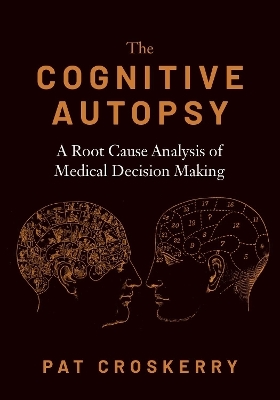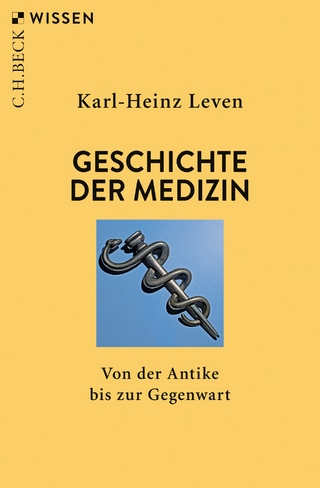
The Cognitive Autopsy
Oxford University Press Inc (Verlag)
978-0-19-008874-3 (ISBN)
The Cognitive Autopsy is a novel strategy towards understanding medical error and diagnostic failure in 42 clinical cases with which the author was directly involved or became aware of at the time. Essentially, it describes a cognitive approach towards root cause analysis of medical adverse events or near misses. Whereas root cause analysis typically focuses on the observable and measurable aspects of adverse events, the cognitive autopsy attempts to identify covert cognitive processes that may have contributed to outcomes. In this clinical setting, no cognitive process is directly observable but must be inferred from the behavior of the individual clinician. The book illustrates unequivocally that chief among these cognitive processes are cognitive biases and other flaws in decision making, rather than knowledge deficits.
Pat Croskerry, MD, PhD, is Professor of Emergency Medicine and in the Division of Medical Education & Continuing Professional Development, Faculty of Medicine at Dalhousie University in Halifax, Nova Scotia, Canada. In addition to his medical training, he holds a doctorate in Experimental Psychology and a Fellowship in Clinical Psychology. He has published over 90 journal articles and 40 book chapters in the area of patient safety, clinical decision making and medical education reform. Two of his papers are in the top 5 cited papers in the emergency medicine education literature. In 2006, he was appointed to the Board of the Canadian Patient Safety Institute, and in the same year received the Ruedy award from the Association of Faculties of Medicine of Canada for innovation in medical education. He has given over 500 keynote presentations at leading medical schools, hospitals, and universities around the world.
Foreword
Preface
Acknowledgements
Introduction
The Cases
Case 1. Christmas Surprises
Case 2. Distraught Distraction
Case 3. The Fortunate Footballer
Case 4. An Incommoded Interior Designer
Case 5. Teenage Tachypnoea
Case 6. The Backed-up Bed Blocker
Case 7. The English Patient
Case 8. Lazarus Redux
Case 9. A Model Pilot
Case 10. A Rash Diagnosis
Case 11. The Perfect Storm
Case 12. A Case of Premature Closure
Case 13. Postpartum Puzzler
Case 14. The Blind Leading the Blindable
Case 15. Pseudodiagnosis of Pseudoseizure
Case 16. Failed Frequent Flyers (a and b)
Case 17. Explosions, Expletives and Erroneous Explanations
Case 18. The Representativeness Representative
Case 19. The Michelin Lady
Case 20. An Instable Inadvertence
Case 21. A Laconic Lad
Case 22. The Misunderstood Matelot
Case 23. A Hard Tale to Swallow
Case 24. A Rake's Progress
Case 25. Deceptive Detachment
Case 26. A Search Satisfied Skateboarder
Case 27. The Vacillated Vagrant
Case 28. A Tale of Two Cycles (a and b)
Case 29. Misleading Mydriasis
Case 30. Bungled Bullae
Case 31. Overdosing the Overdosed
Case 32. The Lost Guide
Case 33. Hazardous Handover
Case 34. Double Trouble
Case 35. Tracking Fast and Slow
Case 36. Alternate Alternatives
Case 37. Notable Near-miss
Case 38. A Stone Left Unturned
Case 39. Sweet Nothings
Case 40. Straining the Strain Diagnosis
Case 41. Missed It
Conclusion: Strategies for Improving Clinical Decision Making
Appendix A: Diagnoses in 42 Cases
Appendix B: Probable Biases and Their Frequencies in 42 Clinical Cases
Appendix C: Analysis of Ordinal Position of Bias in Clinical Cases
Appendix D: Potential Error-Producing Conditions
Appendix E: Analysis of Knowledge-Based Errors in the Case Series
Glossary of Biases and Their Cognitive Factors
Index
| Erscheinungsdatum | 29.06.2020 |
|---|---|
| Verlagsort | New York |
| Sprache | englisch |
| Maße | 175 x 251 mm |
| Gewicht | 703 g |
| Themenwelt | Geisteswissenschaften ► Psychologie ► Allgemeine Psychologie |
| Geisteswissenschaften ► Psychologie ► Verhaltenstherapie | |
| Medizin / Pharmazie ► Medizinische Fachgebiete ► Medizinethik | |
| Medizin / Pharmazie ► Medizinische Fachgebiete ► Notfallmedizin | |
| Studium ► Querschnittsbereiche ► Geschichte / Ethik der Medizin | |
| ISBN-10 | 0-19-008874-5 / 0190088745 |
| ISBN-13 | 978-0-19-008874-3 / 9780190088743 |
| Zustand | Neuware |
| Informationen gemäß Produktsicherheitsverordnung (GPSR) | |
| Haben Sie eine Frage zum Produkt? |
aus dem Bereich


